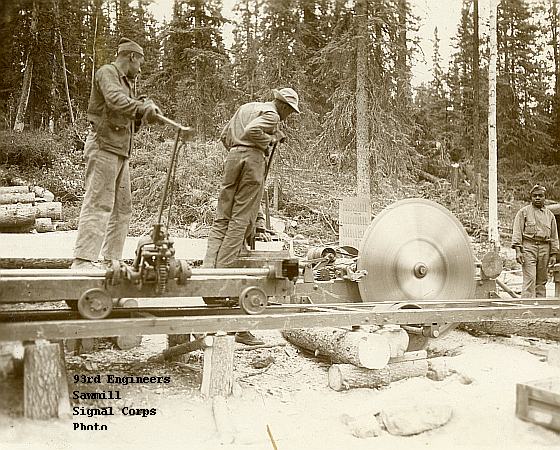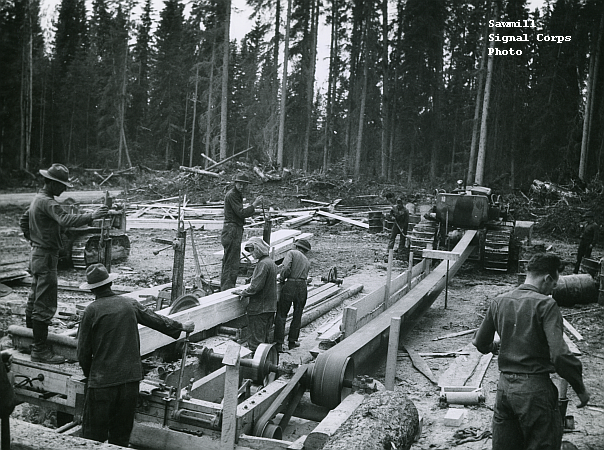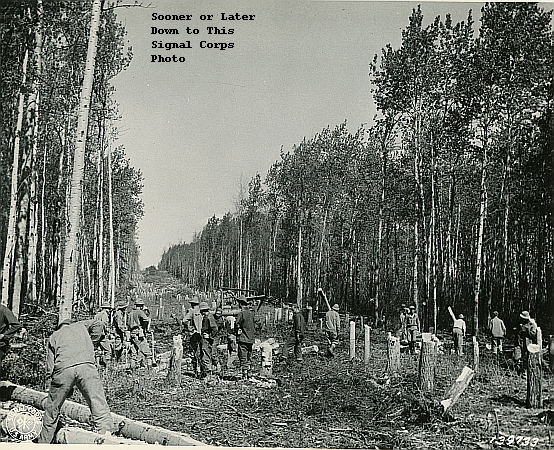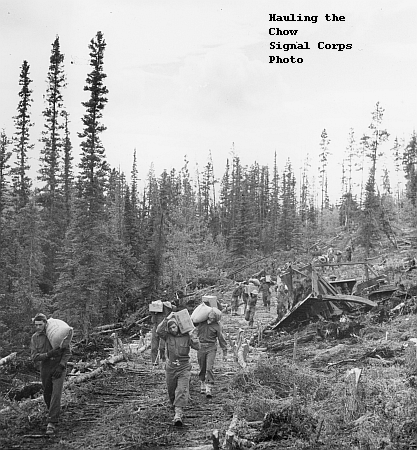
Leaving Florida, the white officers of the segregated 97th Engineering Regiment knew they headed from the Sunshine State to extended duty in subarctic Alaska. Few of the 1200 young black soldiers who worked for them knew their destination or what lay in store. For them a transcontinental train ride meant exciting adventure.
At Eglin Field they dutifully packed their barracks bags and piled into the back of trucks. The trucks carried them to Pensacola where they boarded two waiting troop trains. The trains pulled out of springtime Pensacola on April 15, 1942, headed west.
White Civilians Meet Black Soldiers in Alaska
Most of the young soldiers had grown up in small towns in the Carolinas and Georgia and the stringent rules of Jim Crow had afforded few opportunities to see the world outside those towns. Now they travelled the width of the American continent.

They crossed the Mississippi at Memphis, Tennessee and reached St. Louis on April 16. The next day they passed Kansas City and then pulled into Dodge City.
A 1939 Hollywood movie starring Errol Flynn had made Dodge City famous as the epicenter of the historic Wild West. Captain Walter Parsons, in charge of one of the two trains, remembered, “…since some of the boys had seen the picture show about the place, they got a big kick out of being there.”
A day later, in Leadville, Colorado, the trains ran into snow, and Parsons remembered, “They opened all the windows they could and let the snow blow in… They had snowball fights. It was the first time some of these boys had seen snow.”
They would soon see a whole lot more of it.
Leaving Colorado and moving on into a Utah desert, the trains stopped for a time and some of the men got down to stretch their legs. A sandstorm blew in and they climbed back aboard in a hurry.
The trains passed through Idaho and then Oregon on the 19th. And they reached their destination at Fort Lewis, Washington on April 20, 1942—just five days out of Pensacola.
Plans and movement orders for a regiment always look good on paper. Reality at the Port of Seattle looked quite different. Wartime logistical chaos prevailed and promised personal equipment for the soldiers—sleeping bags, winter clothing, cold weather gear—had not arrived yet.
Up against a brutal schedule, the regiment could not wait. They would head out into the North Pacific and then through plunging temperatures up the inside passage to a Valdez, Alaska still locked in winter. They would just have to hope the equipment caught up.
One company, 160 soldiers, moved directly from Fort Lewis to the Seattle Port of Embarkation and moved their few trucks off the trains. Loading them onto the deck of the troopship USS David Branch, they chained them down on the deck. Through the day on April 22, the rest of the regiment moved to the port and crammed their 1,200 bodies and barracks bags into the fetid hold.

The David Branch headed out into Puget Sound in the evening on April 22.
You know about Florida. Stand by for Valdez, Alaska.































